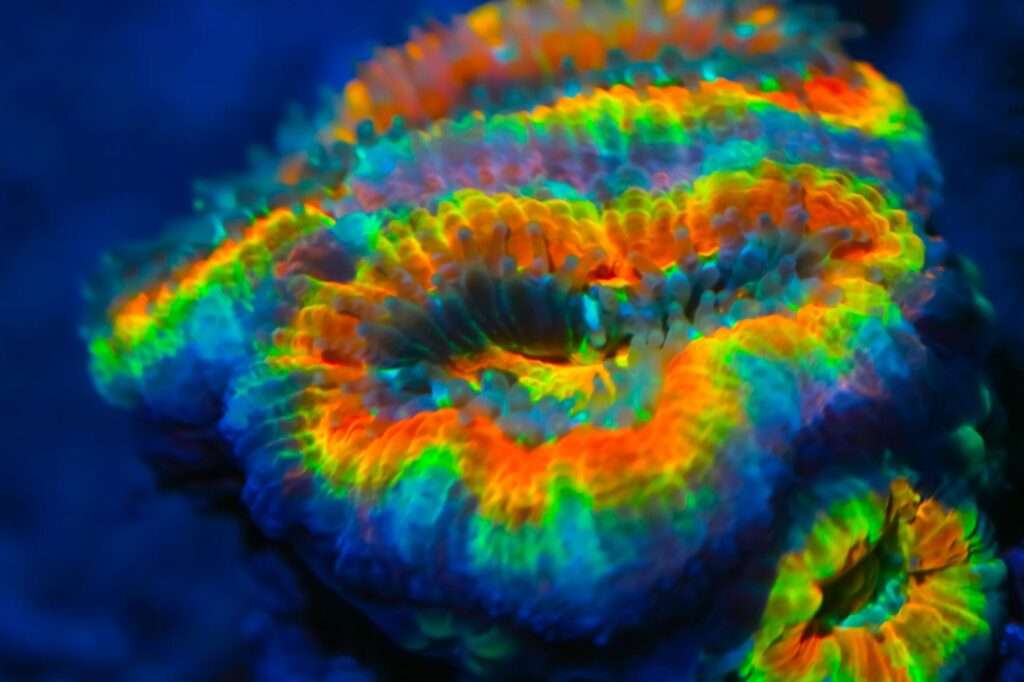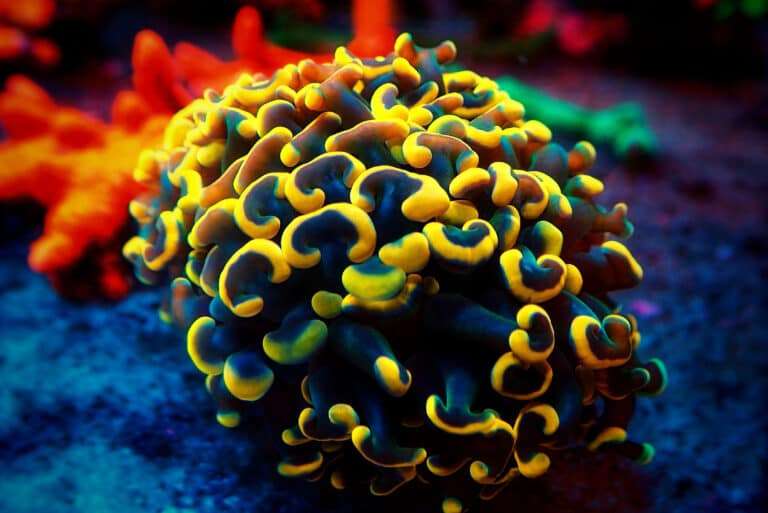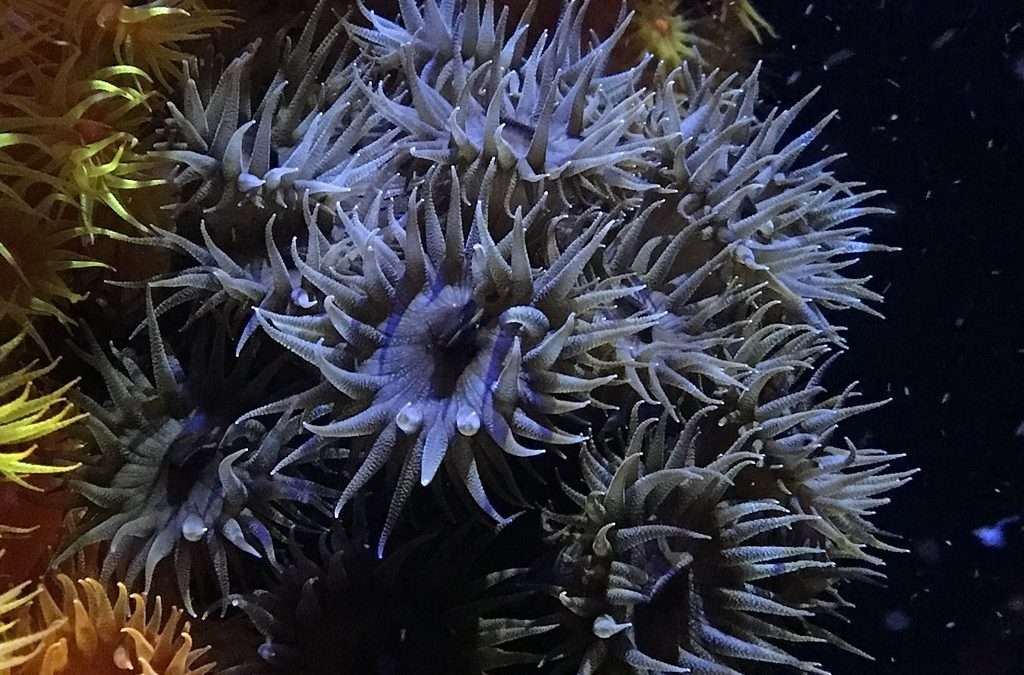
The big polyp stony coral (LPS) Acanthastrea echinata is a striking member of the Mussidae family. They can be found in hues ranging from strong orange to intense red and green. The second most well-liked and sought-after Acanthastrea species is the Echinata Coral, which comes in second only to the Acan Lord A. lordhowensis. With considerable success, A. echinata has been bred in captivity, giving rise to a range of hues. The names of propagated specimens include Lavender Green Acan Echinata, Rainbow Acan Echinata, and Orange Crush Acan Echinata, among others.
Habitat
In 1848, Edwards and Haime wrote a description of the Acanthastrea genus. With considerable success, the A. echinata has been reproduced in captivity, giving rise to a range of colors. On the reef, the Acanthastrea echinata can be found at depths of 0 – 98 feet and in a variety of habitats (0 – 30 m). Rarely do they get larger than 3 feet (1 m). They spread out huge, tangled tentacles at night to feed.
Morphology
The coral A. echinata has corallites, which are skeleton formations beneath each polyp, with walls that are uniform in height, giving the coral a more unified appearance. The identification is helped by the discovery that these walls are shared when A. echinata polyps are not fully grown. Due to their fleshy polyps, when the polyps retract, tiny folds develop that resemble an accordion. They are available in brown, rust, and green, although captive frags can also contain mixtures of lavender (gray), orange (rust), and vibrant green.
The polyps are enlarged, and can potentially be mistaken for species of Blastomussa and Lobophyllia. The walls of the Acan Echinata are shared by all of the individual polyps instead of being “separate” on the corallite structure like they are in the last two coral varieties. Since their fully developed polyps give the appearance of having separate corallite “walls,” it can be a bit challenging to identify them when this happens. In this situation, it would be useful to be able to visualize the shared walls that make up the skeletal framework.
In Captivity

- Feeding
The Acanthastrea genus has evolved a number of feeding techniques. They get some of their nutrients from a marine alga called zooxanthellae through a symbiotic interaction. They can also take in dissolved organic substances and planktonic creatures as well as food particles from the water column. While they can be fed zooplankton and extremely small food, including Ricordea (a species of mushroom coral), A. echinata in captivity primarily consume nanoplankton and dissolved organics in the water.
- Social Interactions and Compatibility
Other coral species cannot coexist with the Acanthastrea genus. The A. echinata gets along with its own kind, but often, those from other species that have different colors are more hostile. They must, in fact, be kept well away from other corals. At night, the tentacles on their body expand and sting nearby corals. If the coral is close enough, they will even invert their stomach onto it in order to consume the skeleton’s tissue there. They withdraw their stomach back within after digesting their “enemy.” In the presence of soft corals, the Acanthastrea genus does not thrive as well. If there are too many softies, several Acan species will perish.
Table





